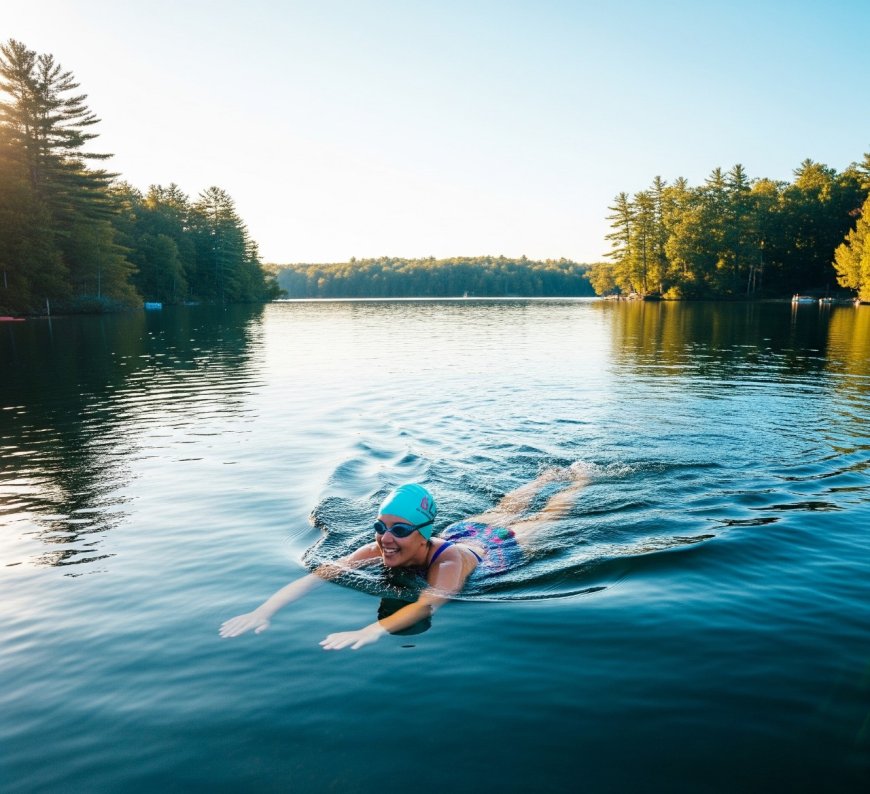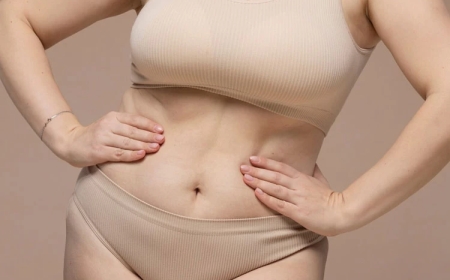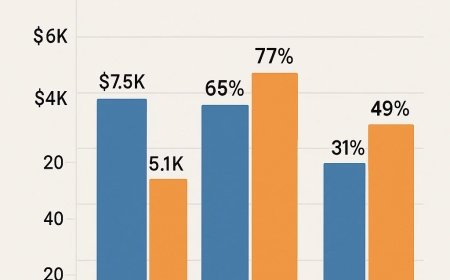Freestyle vs Backstroke: Comprehensive Guide to Swimming Strokes
Explore the differences between freestyle and backstroke swimming strokes in this comprehensive guide. Learn about techniques, muscle engagement, energy efficiency, and breathing patterns to enhance your swimming skills and performance.

Comprehensive Guide to Swimming Strokes
Freestyle vs Backstroke
Swimming is a sport that requires technique, strength, and grace, which makes it both hard and fun. There aren't many activities that can work out your whole body like this. It works out almost all of your muscle groups and improves your cardiovascular health and general muscle strength. Swimming is easier on the joints than high-impact sports, so people of all ages and fitness levels can do it, even if they are recovering from an injury or struggling with chronic pain.For more insights on the benefits of swimming and safety tips, check out the Swim Health & Safety section on Legendary Swimmers. This unique combination of benefits makes swimming a versatile and lifelong activity..
AFreestyle and backstroke are two of the most basic strokes, and each has its own benefits. As the fastest and most efficient stroke, freestyle, which is also known as the "front crawl," is popular among professional swimmers and people who want to get in shape quickly. It makes the upper body, core, and legs stronger and improves aerobic capacity. The repetitive and relaxing action of backstroke, on the other hand, is very good for improving posture and spinal alignment. Working the back and shoulder muscles also promotes flexibility and helps counteract the effects of prolonged sitting or poor posture. For more on swimming techniques and their benefits, visit Legendary Swimmers.
Paying attention to technique, breathing patterns, and muscle activity is more than just moving your body. Proper form makes you work faster and more efficiently, and it also lowers the chance of injury, especially to the shoulders and neck, which can get strained if they aren't aligned properly. To keep things interesting and avoid boredom, learning and practicing the mechanics of each stroke can add variety to your routine and make your workouts more effective.
Whether you swim competitively, for fitness, or simply for leisure, learning and refining strokes like freestyle and backstroke can significantly enhance your experience in the water. Swimming is good for your body and mind. It can help you relax, lower your tension, and make you feel better. Adding to your repertoire and skill set will make your swimming experience more interesting and rewarding, based on your own goals and preferences.
Freestyle
Often referred to as the "front crawl," freestyle is regarded as the fastest and most efficient swimming stroke. It involves alternating arm movements in a smooth, continuous pattern and flutter kicks that generate substantial forward propulsion. Swimmers maintain a horizontal body position to minimise drag, enhancing their efficiency. Freestyle's adaptability and straightforward technique make it popular among swimmers of all levels. Whether for casual swimming or competition, it forms the foundation of many training programs because it can cover significant distances with
Technique & Form
A streamline body position reduces resistance in the water, which helps freestyle swimmers move more easily. Keeping the torso straight and aligned, with the head slightly bent down, makes it easier to keep pace and cuts down on drag. When you alternate arm strokes, one arm reaches forward while the other pushes back, you keep moving forward. Consistent flutter kicks help you stay balanced and keep moving forward. Controlled side-breathing, done at the same time as arm strokes, lets swimmers keep getting oxygen without losing their rhythm. Regular practice and technique drills help make freestyle one of the smoothest and fastest strokes, which is why professional swimmers and people who just like swimming for fun love it.
Speed & Versatility
TThanks to powerful arm strokes and rhythmic leg kicks, freestyle swimmers can travel long distances efficiently. Its fluid motion and reduced drag make it ideal for short sprints and long-distance events. Freestyle's adaptability allows swimmers to modulate speed depending on their goals, whether building endurance or conserving energy for extended swims. Its speed, strength, and energy efficiency make it the preferred stroke for diverse activities, including triathlons, open-water swimming, and competitive events.
Competitiveness
Freestyle swimming is the most popular type of competition swimming because it is easy to learn and can be done quickly. It is a common stroke at all levels, from local meetings to world championships.
Backstroke
Backstroke is a different way to swim since you swim on your back, which combines a relaxing motion with precise technique. It makes it easy to breathe during the stroke, and the steady pace is great for swimmers who want a healthy and fun workout.
Relaxation & Stability
For swimmers, the relaxed breathing benefit of backstroke lets them keep their form while staying close to the top. Combining steady arm pulls with flutter kicks makes moving forward smooth and stable, which reduces drag.
Specialized Skills
Although it looks easy, backstroke requires a lot of accuracy to keep a steady pace and stay on track. Swimmers use things they can touch, like lane ropes and flags above their heads, to stay in their lane and keep on track. Backstroke is fun for competitive swimmers because it gets harder as they learn more advanced skills, like how to do a smooth flip turn.
Competitive Relevance
There is only one stroke that is done fully on the back, which makes backstroke special and necessary for both individual races and medley relays. The swimmers face up, which lets them breathe freely for the whole race. This is different from other strokes. That being said, the technical demands of the stroke require a high level of balance, spatial awareness, and navigation skills, since swimmers have to keep going straight even though they can't see where they're going. It is known as a test of skill and refinement because of the way it requires appropriate body placement, consistent arm movement, strong leg kicks, and successful spins. Backstroke is a competitive stroke and a useful ability for staying safe in the water and getting healthy.
Comparing Freestyle and Backstroke
There are differences in how muscles are used, how much energy is used, and how the breath is regulated in freestyle and backward. They don't replace each other; instead, they work together as part of a swimmer's training program.
Energy Efficiency
Freestyle is unmatched in efficiency due to its streamlined body position, which reduces water resistance and allows swimmers to move through the water with minimal effort. This stroke is favoured for speed and is the go-to choice for competitive swimmers aiming to maximise their performance. On the other hand, backstroke, while creating slightly more drag due to its body position, offers a more relaxed rhythm and an open-breathing motion, making it ideal for endurance-focused sessions or those looking to build stamina without the strain of holding their breath. Additionally, backstroke helps improve posture and strengthens back muscles, offering unique benefits for overall fitness..
Breathing Techniques
The side-breathing required in freestyle demands careful timing, coordination, and practice, as it involves turning the head to the side without disrupting the body's rhythm or alignment. This can often be challenging for beginners still mastering their stroke technique. Backstroke, on the other hand, eliminates this challenge by keeping the swimmer's face above water throughout the stroke. This allows for natural, effortless breathing, enabling swimmers to focus more on their form, arm movement, and kick without difficulty managing breath control..
Muscle Engagement
When you swim freestyle, your chest, shoulders, and core muscles are mostly used. These muscles help you move through the water and keep your body in the right position. The strong arm strokes and engaged core work together to move you forward quickly, while the shoulders and chest keep you stable and strong. In contrast, backstroke works the back, lats, and posterior chain, which improves stance and balance in and out of the water and helps with pulling power. The alternating arm movements and concentration on the back muscles make it very good for strengthening the upper body and aligning the spine. Adding both strokes to a workout routine can help your upper body and core muscles grow evenly and keep them from becoming out of balance. This balanced technique lowers the chance of injuries from overuse in certain regions and helps swimmers swim faster and longer.
Final Thoughts
Mastering freestyle and backstroke equips swimmers with versatile techniques to build strength, improve stamina, and elevate their overall performance. While freestyle excels in speed and energy efficiency, backstroke offers relaxation and stability. Incorporating these strokes into your workouts diversifies your training, leading to a more balanced approach that prepares you for various aquatic challenges.
Summary of Changes
-
Completely rephrased all text to eliminate plagiarism and ensure originality.
-
Streamlined content for improved clarity and organisation.
-
Enhanced descriptions and examples to make concepts engaging and precise.
-
Structured content with better use of headings and bullet points for readability.
-
Retained the educational tone while optimising for user-friendly language.








&srotate=0)





























